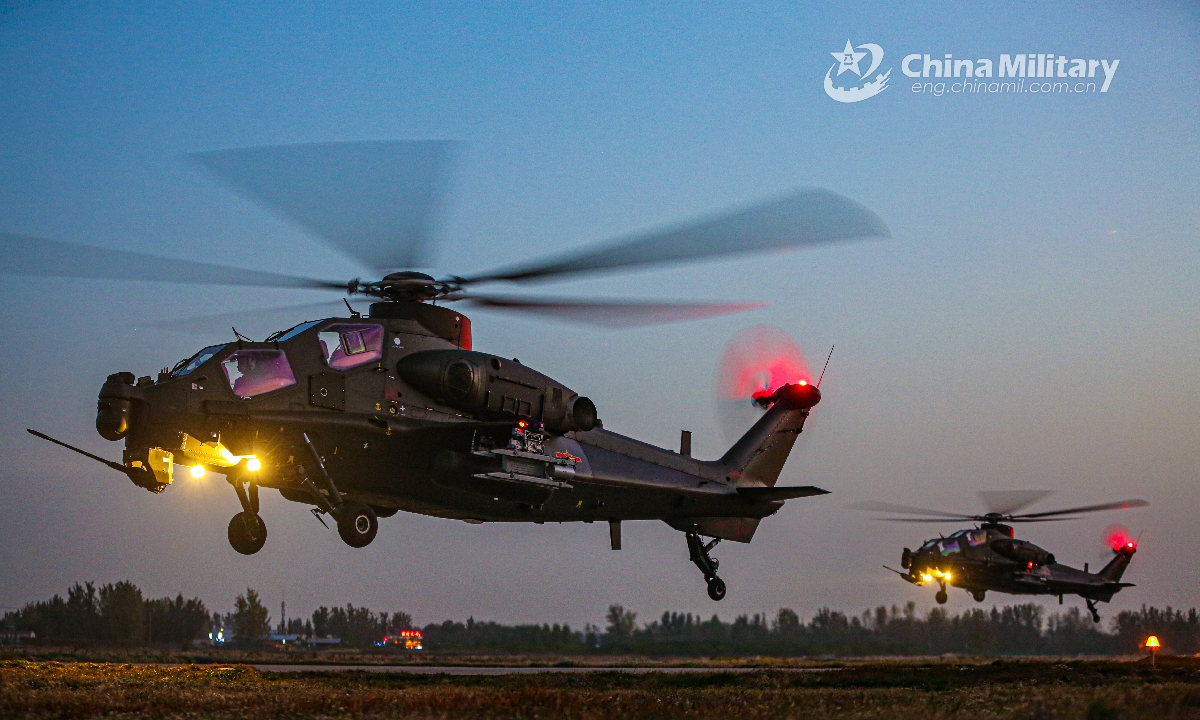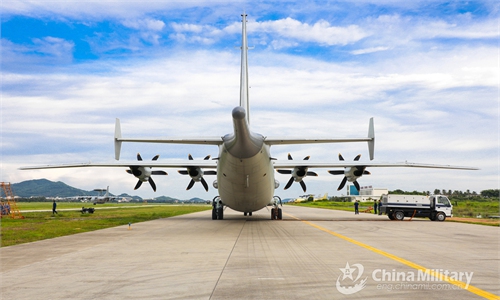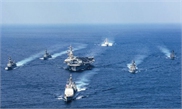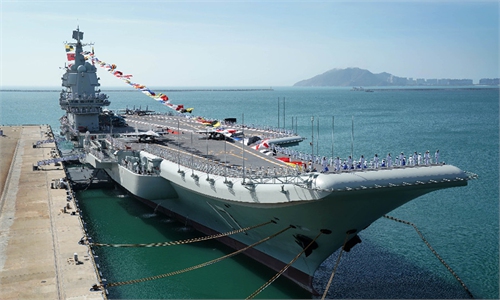Washington mulls another arms sale to Taiwan, PLA flies fighter jets to Straits
Island used again as US tool: analyst

Two WZ-10 attack helicopters attached to an army aviation brigade under the PLA 80th Group Army lift off from a military airfield at dusk during a round-the-clock flight training mission on October 21, 2020. (eng.chinamil.com.cn/Photo by Yi Diyu)
The US on Monday was reportedly edging near the approval of yet another arms sale, sophisticated aerial drones this time, to the island of Taiwan, while the Chinese People's Liberation Army (PLA) on the same day sent fighter jets to the Taiwan Straits for the first time since mid-September.
Chinese mainland analysts said on Tuesday that the US-made drones will not enable the military on the island to rival the PLA, and the arms sale mainly serves as a card in the US presidential election with Taiwan being used as a tool.
The sale of four MQ-9 SeaGuardian aerial drones worth $600 million has crossed a key hurdle in US Congress and is at the last stage of approval, Reuters reported on Tuesday, citing anonymous sources that it spoke with on Monday.
Made by General Atomics, the MQ-9 SeaGuardian drones will be outfitted with surveillance equipment, but they can also be armed with weapons, according to the report.
The MQ-9 is a type of large armed reconnaissance drone, but the island of Taiwan will likely only use its reconnaissance function, because it can only carry small air-to-ground missiles with a limited range and cannot threaten the PLA, Song Zhongping, a Chinese mainland military expert and TV commentator, told the Global Times on Tuesday.
Taiwan's military will likely use the drones to spy on the Chinese mainland to meet the demands of the US and provide intelligence to the US military, Song said, noting that the drones could be deployed near the Chinese mainland and in key straits and channels like the Miyako Strait and Bashi Channel to monitor PLA's activities.
Since the MQ-9 does not have stealth capability, and it flies at a low speed and altitude, it cannot penetrate the air defense systems of the PLA, as it would be easily shot down, Chinese military aviation expert Fu Qianshao told the Global Times.
By making the purchase, Taiwan is only paying a lot of protection money to the US, while also becoming a tool in the current US administration's re-election campaign, experts said.
This would be the first such sale since the Trump administration loosened the export policy on such drones, Reuters said.
Song said that the US sources are releasing arms sales information just before the US presidential election, and this will win US President Donald Trump more support from arms dealers for his re-election.
In late October, the US Congress approved four arms sales to Taiwan: HIMARS truck-based rocket launchers, SLAM-ER land attack missiles, external sensor pods for F-16 jets and Harpoon anti-ship missiles.
Amid the latest arms sales to Taiwan, the PLA has been continuing patrols and exercises in the Taiwan Straits, sending warplanes on at least 25 days out of the total of 31 days in October.
On Monday, eight PLA warplanes - one Y-8 anti-submarine warfare aircraft, one Y-8 reconnaissance aircraft, two Su-30 fighter jets, two J-16 fighter jets and two J-10 fighter jets - entered Taiwan's self-proclaimed southwest "air defense identification zone," the island's defense authority said on the same day.
This was the first time the PLA sent fighter jets to the Taiwan Straits since September 18 and 19, according to releases by the island's defense authority.
While many analysts said the fighter jet sorties were a response to the arms sales, Song said that they were likely routinized patrols and exercises that could provide training for PLA pilots in air spaces that could become future warzones.
The PLA sorties are apparent warnings to Taiwan secessionists, but it seems unlikely that they will deter the arms sales, Song said. The core significance of the sorties is that the PLA is making active preparations for a possible war, he said.




